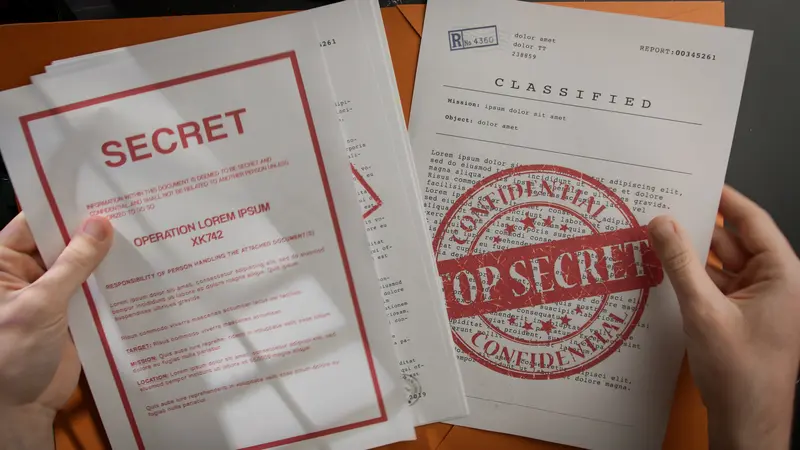Trade Secret Theft Detection: How Professional Investigators Safeguard Your IP
Imagine pouring millions into R&D, only to find one of your former employees slipped your blueprint to a competitor halfway across the world. Just like that, all your years of innovation are instantly gone. This isn’t fiction; it’s a reality that companies and innovators face daily.
A few years back, the FBI busted a counterfeit ring smuggling knockoff semiconductor chips into the US, which, if undetected, could have compromised national infrastructure and disrupted the supply chain.
In another case, a well-known electric vehicle manufacturer is in court with a former engineer accused of stealing trade secrets before joining a Chinese EV startup. The company claims its proprietary work is now being used to develop a competing line of vehicles.
These two cases show intellectual property theft is not just a problem — it’s an industry. Bad actors are constantly seeking to acquire proprietary data. As a result, companies lose revenue and competitive advantage.

Besides waiting for the FBI to bust the cybercriminals, how can businesses fight back? This article explores ways to detect and investigate IP theft, including spotting early signs and deploying forensic audits to take legal action.
Defining Intellectual Property Theft and Protecting Corporate IP
Intellectual property theft isn’t just a legal buzzword—it can dismantle an entire business model if left unchecked. Let’s define terms and processes first.
What Constitutes IP Theft?
It is the unauthorized use, replication, or distribution of proprietary information, including trade secret matters, confidential information, and intellectual property such as patents, trade secret investigation, and copyrights. It can also involve internal processes a company or business uses to maximize production. In short, it is seeing a competitor benefit from the innovation you spent years and resources on.
IP theft takes many forms. Some common ways include a rogue employee siphoning customer databases, counterfeit luxury goods flooding online marketplaces, and a software company’s code popping up in a rival’s product. Unfortunately, these instances of data exfiltration, outright product cloning, and brand infringement cases are increasing, making data recovery a crucial part of combating these threats.
How do bad actors pull it off?
Cybercriminals use a range of methods to steal R&D. The most common in recent times is social engineering, where they rely on phishing schemes, malware attacks, and hacking to infiltrate vulnerable systems. They also exploit breaches in internal security and steal other people’s work.
Sometimes, bad actors may go the old-school way. They may steal prototypes, exploit gaps in security protocols, and coerce some employees to help them steal IP. These actions violate the Trade Secret Protection Act, which is designed to protect valuable intellectual property from unauthorized use.
In all these instances, insider threats pose the greatest risk. Disgruntled workers and corporate spies may use legitimate access to blueprints and other confidential data to extract valuable information, making the company vulnerable to trade secret theft and any threat to its competitive advantage.
Consequences of unauthorized data sharing
The results of IP theft are severe. Businesses lose their competitive edge, and their R&D investments, including trade secret information and corporate secrets, vanish into thin air. Many companies also take a major hit in terms of reputation.
If IP theft includes data such as personal or regulated information, businesses can face hefty fines and sometimes lawsuits for compliance violations. Computer access is often used by cybercriminals to steal private information, including intellectual property stored on electronic devices. This kind of theft can lead to significant legal and financial consequences for the company involved.
Corporate Espionage Tactics & Red Flags
IP theft rarely happens in the open, from counterfeit goods flooding international markets to employees quietly downloading sensitive files. Identifying red flags is the first line of defense.
Here are the four common ones:
Data Exfiltration & Unauthorized Sharing
While some leaks are sophisticated cyberattacks, others are not. It may only take a USB drive, sending attachments to a personal email, or misusing a cloud storage account. In an instant, a company could lose years of investment and effort.
What red flags should business owners and company heads pay attention to?
If one of their employees is moving large volumes of data off internal networks, especially outside business hours, management should pay close attention. Other signs include frequent email attachments sent to personal accounts, remote access from unfamiliar locations or devices, and a spike in file downloads.
Counterfeit Production & Distribution
According to the OECD, the counterfeit goods market is valued at over $500 billion annually, accounting for 3.3% of global trade. Criminal networks replicate anything, from designer handbags to industrial equipment, before selling them on black markets and e-commerce sites.
This illicit trade causes revenue losses, brand damage, and potential legal liabilities for businesses.
How can businesses know their products are being counterfeited?
A spike in customer complaints about poor-quality products can be the first sign that an individual or company is counterfeiting products. Other ways include fake listings of items on online marketplaces and suppliers offering low-priced versions of products.
Insider Threats
Are your employees or contractors with access to sensitive data behaving unusually? While that can be caused by many things, such as internal conflicts among employees, it can be a sign that they may be getting better job offers from a competitor or tempted by financial incentives.
Here are some warning signs to look for:
- Employees hoarding tasks, acting overly secretive about their work, or even refusing to delegate
- Attempts to bypass security protocol
- Unexplained lifestyle upgrades such as expensive cars and luxury travel
Trade Secret Theft
In addition to protecting patents and copyrights, which means protecting ideas, businesses should keep their trade secret information safe. Unfortunately, formulas, business strategies, and algorithms can only be as secure as the people you have entrusted them to. If trust is broken, your business will suffer the most, facing potential damages to both its confidentiality and reputation.
While you should always trust employees, there are some red flags to watch out for. If employees are accessing proprietary data outside regular job hours, or you notice repeated logins from remote locations, it is time to act. Additionally, if departing employees copy, download, or print sensitive documents before leaving, you should be on high alert as a business owner, as it could lead to a legally questionable breach of confidentiality and trade secret information.
How Corporate Investigation and Trade Secrets Theft Detection Secure Your IP
Corporate investigators approach IP theft like detectives: they collect digital footprints, interview key personnel, and stitch together a trail of evidence to pinpoint who’s stealing your secrets.
Here is a step-by-step breakdown of each stage in the investigation process.
Evidence Gathering, Forensic Analysis & Expertise
Regardless of how experienced cybercriminals are, they always leave a trail of evidence. It is just a matter of finding it. The first task for a digital forensics team is analyzing log files and network traffic to identify exfiltration routes and endpoint security alerts.
If an employee or an insider is suspected of being part of the heist, a forensic team conducts background checks. In addition to checking whether they are a disgruntled employee or a corporate spy, the team reviews various documents to uncover what exactly was stolen. They check network logs, transaction records, and supply chain documents to determine whether the IP theft involved design, trade secrets, or counterfeits entering the market. The investigation also focuses on whether there was a breach of trade secrets or a failure in the protection protocols, and assesses how secure the company’s sensitive information was before the incident.

Tracking Down Leaks & Identifying Suspects
Determining who is responsible is the next important step in R&D leak investigations. Each industry is unique, as is the process of tracking down leaks. Biotech companies’ stolen research requires a different approach from investigating luxury retail counterfeiting. This is why industry-specific expertise and technology matter.
Tracking also relies on technologies such as OSINT (Open-Source Intelligence). Using OSINT, companies can track online mentions and sales of counterfeit goods and leaked proprietary information.
Once tracked and identified, businesses, with the help of brand protection teams and ecommerce platforms, can initiate the process of removing fake listings before they cause more damage to their brand.
Maintaining Legally Discreet & Legal Compliance
While investigating IP theft cases, corporate investigators must follow the law. The goal is to get answers without overstepping legal boundaries to ensure all findings are admissible in court. This means avoiding privacy violations and entrapment.
How is this possible?
To maintain discrete and legal compliance during investigations, a business must involve an in-house legal team. Such a team helps define the scope of investigation and ensure every process complies with corporate policy, industry regulations, and international laws.
Collaboration with Law Enforcement
In cases involving large-scale counterfeiting or cross-border leaks, internal security measures are not enough. A company must cooperate with law enforcement agencies such as the FBI, Homeland Security, and international cybercrime units.
By providing actionable evidence uncovered during corporate investigations, businesses play a key role in enabling enforcement actions. The law enforcement units can then arrest those involved, seize counterfeit products, and shut down illicit operations such as factories making counterfeits.
Intellectual Property Theft Cases, Investigations & Enforcement Strategies
Enforcing your IP rights can range from a straightforward cease-and-desist letter to a multi-jurisdictional lawsuit, sometimes in tandem with criminal prosecutions.
Here’s a breakdown of what each option involves.
Cease-and-Desist Orders
Think of this as the first warning shot. Once you discover that someone or another business is using your IP without your knowledge or permission, you can send them a cease-and-desist letter demanding they stop or face legal consequences.
These letters are ideal when dealing with local offenders. These can be local distributors and online sellers that have listed or are pushing counterfeit goods. The beauty of this option is that a well-crafted letter is enough to shut them down without taking them to court or involving law enforcement agencies.
Civil Lawsuits
Sometimes, the offenders might not respect polite warnings. In those cases, the next step businesses should take to protect their IP rights is to go to court. Courts listen to all claims, from patent infringement, trademark dilution, and trade secret misappropriation (Uniform Trade Secrets Act).
A successful lawsuit has two possible outcomes: businesses winning monetary damages or securing injunctions to halt production and distribution. Any of these outcomes helps protect business integrity and market share.
Criminal Charges & Law Enforcement Partnerships
For large-scale counterfeiting operations, a lawsuit or cease-and-desist orders are not enough. This is because these operations are tied to organized criminal groups. Fortunately, law enforcement exists for this important reason.
Federal prosecution under laws such as the Economic Espionage Act helps businesses protect their IP and ensures those responsible face heavy fines and jail time for the offenses.
International IP Enforcement
IP theft can sometimes be trickier if the people benefiting live in another country. However, businesses can still get justice, thanks to existing treaties such as WIPO and TRIPS.
While not all countries are IP-friendly, companies are encouraged to combine on-the-ground enforcement with working with customs agencies and international legal teams.
Notable Case Studies & Real-World Examples
These real-world cases show how swiftly corporate investigations and legal strategies can neutralize even the most sophisticated IP theft operations.
Case Study #1: Tech Giant vs. Former Engineer
An engineer who worked for one of the largest tech companies was taken to court by their former employer. The company accused the engineer of taking their self-driving car technology to their new employer, a ride-sharing app.
The tech company successfully secured a huge settlement. This case is a public reminder that trade secret theft has consequences for both the person stealing and the companies buying the stolen technology.
Case Study #2: Luxury Brand Counterfeiting Crackdown
A global fashion powerhouse recently launched a new product line as part of a joint venture with a music star. Unfortunately, a surge of counterfeit products forced the company to act.
The strategy to protect their brands and genuine customers was multi-layered. The fashion brand first applied legal pressure to shut down manufacturers before removing fraudulent e-commerce listings. They also tightened supply chain control to prevent future leaks.
These IP enforcement strategies wiped out a major counterfeiting ring and restored consumers’ confidence in the brand.
Case Study #3: Mid-Sized Manufacturer Protects Trade Secrets
Small and medium companies are also not spared from IP theft. A mid-sized manufacturing firm discovered an internal leak with the help of its IT team after noticing unusual data transfers. After further investigations, it was revealed that a departing employee was responsible. They were downloading sensitive production plans onto their laptop.
Which steps did the company take? The manufacturing firm acted fast, preventing further losses before taking a legal route. They further tightened their internal security measures and now monitor their systems regularly to avoid that from happening in the future.
Preventive Measures & Best Practices for Trade Secret Protection
Prevention is key: a combination of airtight NDAs, cyberdefenses, and vigilant brand monitoring can deter opportunistic IP thieves before they strike.
Here’s what each tactic entails:
Proactive Internal Controls & Audits
Companies should have regular software and network audits. Besides helping detect vulnerabilities before they become an entry for data leaks, audits also ensure compliance with security standards.
Physical security measures such as restricting access to prototypes, R&D labs, and confidential blueprints further help minimize IP theft. Other measures include training employees on IP risks and ensuring adherence to strict NDA policies.

Strong Cybersecurity Framework
Hackers are not only going after bank accounts but also targeting trade secrets. To ensure their IP is safe and only authorized employees have access to sensitive data, companies can enforce role-based access control.
Additionally, they can include encryption as an extra shield and invest in advanced monitoring tools to detect unusual activities. This may consist of a “zero-trust” architecture where every access request is verified first, regardless of its source.
Employee Onboarding and Offboarding Protocols
Staff, intentionally or unintentionally, are responsible for most IP theft cases. Recognizing this risk, many companies invest significant time and resources in both onboarding and offboarding processes to protect sensitive information.
Doing background checks during hiring can flag potential risks while educating employees on confidentiality obligations. Other protocols companies should employ include acting fast after an employee leaves the company, such as retrieving company devices, deactivating accounts, and conducting exit interviews to reinforce legal obligations.
Ongoing Surveillance and Brand Protection
In addition to ensuring that there are internal measures in place to prevent IP theft, companies should also monitor external threats. The common ones are online fraudsters and counterfeits.
Companies can leverage brand monitoring tools to track unauthorized use of their trademarks or product replicas on e-commerce sites, shady marketplaces, and social media pages. If found, they can issue takedown requests, block domains, and collaborate with law enforcement agencies.
Conclusion & Key Takeaways
From cutting-edge startups to established global enterprises, the value of intangible assets can’t be overstated. Proactively protecting intellectual property isn’t just good practice—it’s essential to securing your company’s future.
IP theft not only erodes a brand’s reputation but also leads to loss of revenue, weakens a company’s market position, and stifles innovation. This is why companies should put efforts and resources into guarding their trade secrets while keeping an eye on counterfeit products.
In addition to day-to-day internal efforts within their companies, owners and executives should work closely with corporate investigators, particularly if they suspect their trade secrets are unsafe. These professionals help identify the bad actors, gather evidence, and enforce legal actions before a company explores legal alternatives or contacts security agencies.
Do you want to dive deeper? Check out resources on advanced ways of building a zero-trust security framework, better ways to monitor supply chains for leaks, and, more importantly, how to enforce IP rights across different markets across the globe.




